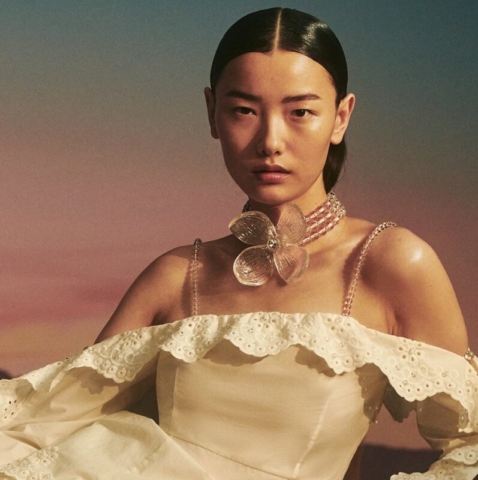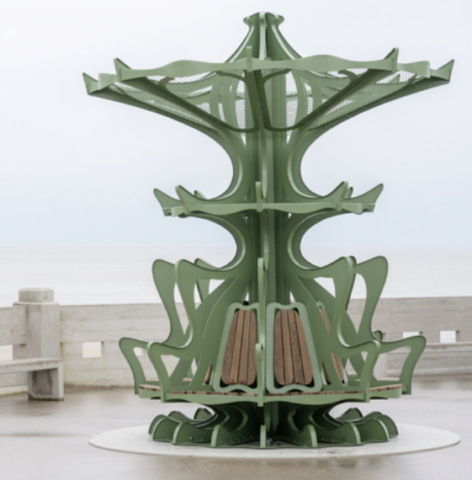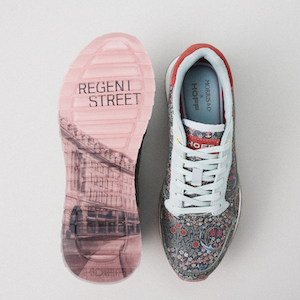Flowing; a Waterfall of Colours and Symbolism at “Humanae Terrae”
By Jo Phillips
A waterfall of colours. A flood of symbolism and myth imbued with contemporary poetry. This is what the viewer will experience at the exhibition Humane Terrae with the works of Paolo Porelli and Sophie Aguilera Lester.
They are two different artists, two personalities that have the same medium in common: ceramics. This element is one of the most ancient materials ever used, yet these two artists stress us that it still can be a precious means to explore the contemporary world and society.
Verde Stimolato (Stimulated Green)
2016
terracotta smaltata (glazed terracotta)
38x16x14cm
© Paolo Porelli
It is an exhibition about contrasts that create a new and original narration. A confrontation that starts from the encountering between Porelli and Lester, male and female, and their diverse visions. The first uses ceramics in order to highlight the consequences of consumer society on earth. The second imbues her ceramics with psychological elements such as abandonment, childhood or past memories.
Paolo Porelli’s vision is based on the human figure, making it the model of Western Culture. He forges new deities and idols of our contemporary society, creating personifications of concepts that animate them. Examples are his Idoli Metallici (Metallic Idols).
Venere produttrice (Venus Producer)
2017
porcellana metallizzata con PVD (Porcelain with PVD)
40x14x14cm
© Paolo Porelli
Sophie Aguilera Lester, on the other hand, is based on the impulses, the unconscious reactions of her characters, represented in their fragility and feminine delicacy. His creations are also dense of symbolism and hints of popular culture grasped in their psychological analysis. An example is her Bajos Las Margheritas.
Bajo Las Margaritas (Under the Daisies)
2017
Scultura a terra (Sculpture on the ground)
Gres 1240º
50x160x82 cm
© Sophie Aguilera Lester
Love Bugs
2017
Gres 1240º
18x28x22 cm
© Sophie Aguilera Lester
About the artists:
Sophie Aguilera Lester (London, 1984), is a young artist who lives and works in Barcelona, the city where she completed her artistic studies, specializing in sculpture. She has worked for the past seven years with ceramics, a material that consents infinite artistic possibilities. She completed her training in Madrid in the studio of María de Andrés and Alfredo Aguilera.
Paolo Porelli (Rome, 1966), has a degree from the Accademia di Belle Arti di Roma. He is an artist and maestro of sculpture and ceramic arts at c.r.e.t.a. rome, an international center for the ceramic arts. His works are present in numerous public collections including the Musei Capitolini of Rome, the Museo Civico di Rocca Flea in Gualdo Tadino, The Clay Studio of Philadelphia (Stati Uniti), ASU Art Museum Ceramics Research Center in Tempe (Stati Uniti) and the Taoxichuan Art Gallery of Jingdezhen (China). He also exposed some of his pieces at the National Gallery of Modern Art (GNAM) in Rome, at the exhibition ‘La scultura ceramica contemporanea in Italia’.
We have asked Paolo Porelli some questions about the exhibition; the answers can be found below.
How is your work structured?
I don’t like to plan my work in advance. I do it only if I am forced to work on a specific theme. In any case, I’m constantly drawing, and often I take inspiration from the ideas that I develop with the drawings. Then, once I have identified the figure that I would like to produce, I begin to build a structure with plumbing pipes on which I press clay until I attain the form that I am seeking. Nevertheless, modeling the clay helps me to clarify the form that I have in my head that is still not well-defined. Once I have completed the modeling, I cut the figure into pieces and remove it from the armature. I hollow out the pieces and when they are a bit stiffer, I reassemble them with slip that serves as a glue. I then refine the figure, dry it, and fire it. It is a very long process that can pose many difficulties along the way, but is almost always successful.
What is your conception of art?
Art is a way to know yourself and to become familiar with a broader reality both contemporary and historical. You have to enjoy the creative process and to perceive it. You must dedicate yourself to art completely.
How did you collaborate with Sophie Aguilera Lester? Do you think your work is similar to hers? Why did you pair up with her?
The gallerist put us together. No doubt, he wanted to construct a show of contemporary figurative sculpture in ceramics. Since he is Spanish, he is connected with artists from his country. Sophie and I have some things in common such as the symbolism and surrealism of the figure, but we are differentiated by themes and aesthetic expression.
If you had to choose the word that most embodies and describes your art, what would you pick?
Eclectic
What is the most beautiful and important aspect that the viewer should perceive from the exhibition?
I want the viewer to discover other aspects and points of view that go beyond my vision. At any rate, I always hope that my work provokes thought and acts as a stimulus to perceive new knowledge.
Do you think that the use of colour, with its glazes and shades, is the most important part of your art?
Colour is emotion and another value that the form carries. Often I negate it to give protagonism to sculptural quality/plasticity. In other cases, I reutilise it in all its intensity, especially in sculptures of small format, “figurines”, like those of the 18th century that display a purely ceramic refinement.
Your pieces embody a sort of “modern deities,” do you think that contemporary society is inclined to create these gods?
Certainly we are unconscious worshippers of the divinities that I personify. These gods express our dependence on petrol, household appliances, buying, and selling. If something that supports our well-being is missing, we go into crises of abstinence.
Useful links:
Details of the exhibition on Facebook
Sophie Aguilera Lester links:

















